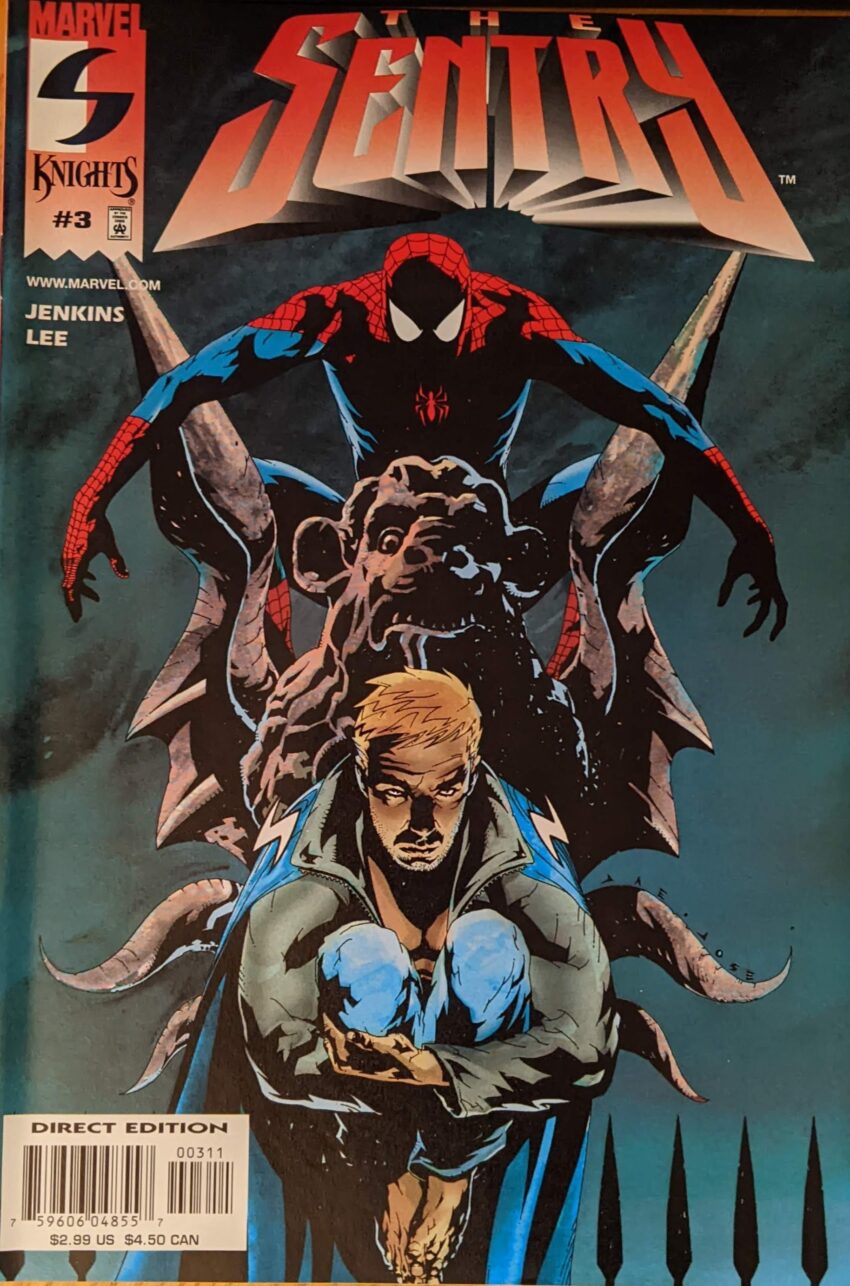Here we join a really weird stunt, already in progress. Paul Jenkins had this idea for a character with a long history in the Marvel Universe that had been mysteriously erased. And at this time, no stunt was too broad, so Jemas & Quesada pushed that into the real world, selling the Sentry as a “lost” Stan Lee creation who might just pre-date the FF. The backs of each issue would feature increasingly preposterous conversations between Joe Q and Stan Lee about this long-lost property to sell the idea, but it was all fake.The conversations included a bunch of paranoia about how this concept was hidden for a reason, that it was so dangerous it could destroy everything. Marvel was really wild under Jemas/Quesada, almost anything could happen.
This echoed the story itself, by Jenkins, Jae Lee and Jose Villarubia, which introduced Robert Reynolds, a regular-seeming guy living in the suburbs with his wife Lindy, who half remembers, half thinks he’s hallucinating that he used to be the Sentry, “The Golden Guardian of Good.” The Sentry’s evil opposite number was the Void, a literal shadow of a man, and Bob knows in his heart that the Void has returned, and he’ll have to become the Sentry one more to face him. But he also knows that’s crazy. Through his comic book visions, we see the Sentry’s origin, taking “the professor’s secret serum,” we see him fighting the Void, we see him team up with much of the Marvel U, and we see the professor whose serum he uses warning him that he’s becoming too dependent on it, among other things. He keeps telling himself none of that can be real, even as he finds his old super serum in the basement and drinks it, even as the Void manifests in his dog. He’s almost convinced he’s just an alcoholic sneaking drinks as his wife accuses him when she finds him, until he flies away.
He runs into Reed Richards, who was one of his closest friends and now doesn’t remember him, because no one remembers the Sentry. Bob tells Reed he thinks it’s a conspiracy, but he can’t remember why. He tries to get Reed to remember attending Bob & Lindy’s wedding, and when that doesn’t work, says the word “unicorn,” which seems to make Reed almost shake whatever’s keeping him from remembering as Bob flies away. Reed goes home and asks Sue if they ever went to a wedding with a unicorn, and then a statue of one appears in the room, on a shelf, and they both start to sort of remember the wedding. As Bob rides the subway, becoming more sure of who he is, Reed & Sue find a VHS tape marked “wedding” they don’t remember, but when they put it in the VCR, it’s Reed saying if they’ve found this tape, they’re as good as dead. Throughout, Bob’s flashbacks to the Sentry’s career are pastiched or outright copied from different artists as we move through time: Jack Kirby, John Byrne, Frank Miller, Rob Liefeld, someone appropriate to each decade of Marvel as we moved through the eras. And as he gets into issue 3, obviously, Spider-Man shows up, so we’re doing this. But this issue begins with Bob finding Hulk, who remembers him immediately as his old friend, “Golden Man.” But meanwhile…
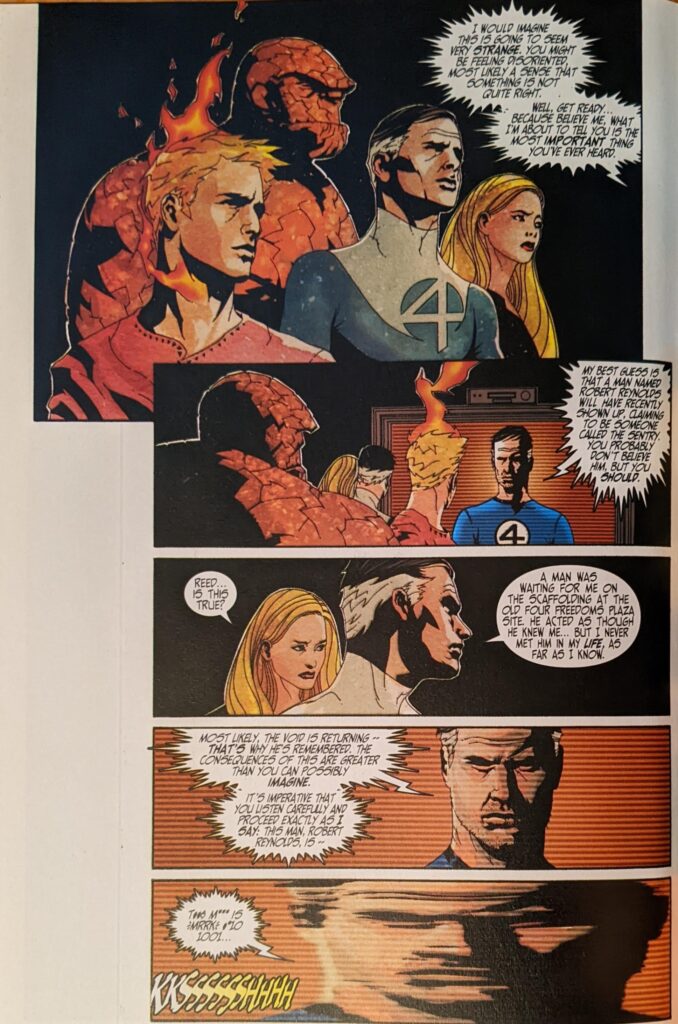
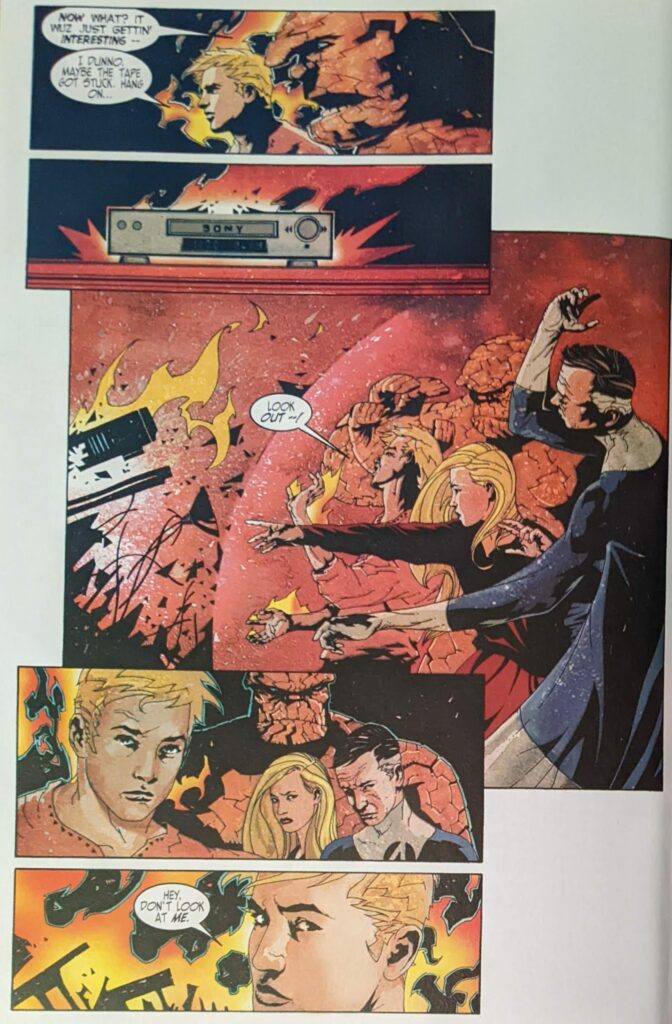
Ominous! This series had great atmosphere, helped a lot by a Jee Lee who’s very different from the last time we saw his art, but not yet the guy who has drawn 100 covers that look exactly the same. Here, he’s pretty good! Back in the A plot, Bob is saying Hulk should have evolved by now, that something’s wrong, but Hulk says Hulk is Hulk, which is very Hulk of him. Bob remarks that Hulk remembers him.
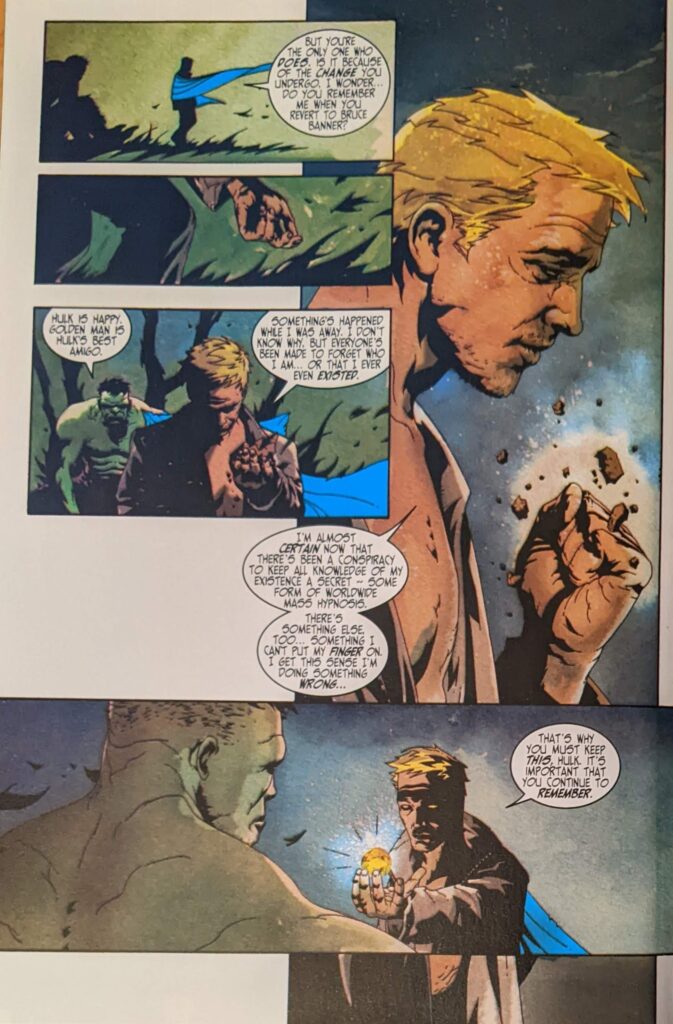
He tells Hulk the Void is coming back, and Hulk is scared of “Shadow Man.” He tells Hulk all they can do is wait for the Void to reveal himself, and that things will get worse before they get better. Quick cut to an extremely racist politician somewhere in Africa finding out that a village he was going to see has been quarantined due to something horrible happening that killed a lot of people and an elephant. Back in Manhattan, Reed is looking into Bob Reynolds, who is blurry on security footage, and who has the social security number of a dead man. Reed also confesses to his journal that he has somehow reacquired his childhood fear of the dark. This book is all about building mood, just describing it sucks, but hey, it’s what I do. Elsewhere, as Bob stares at the city next to a gargoyle, he has a visitor.
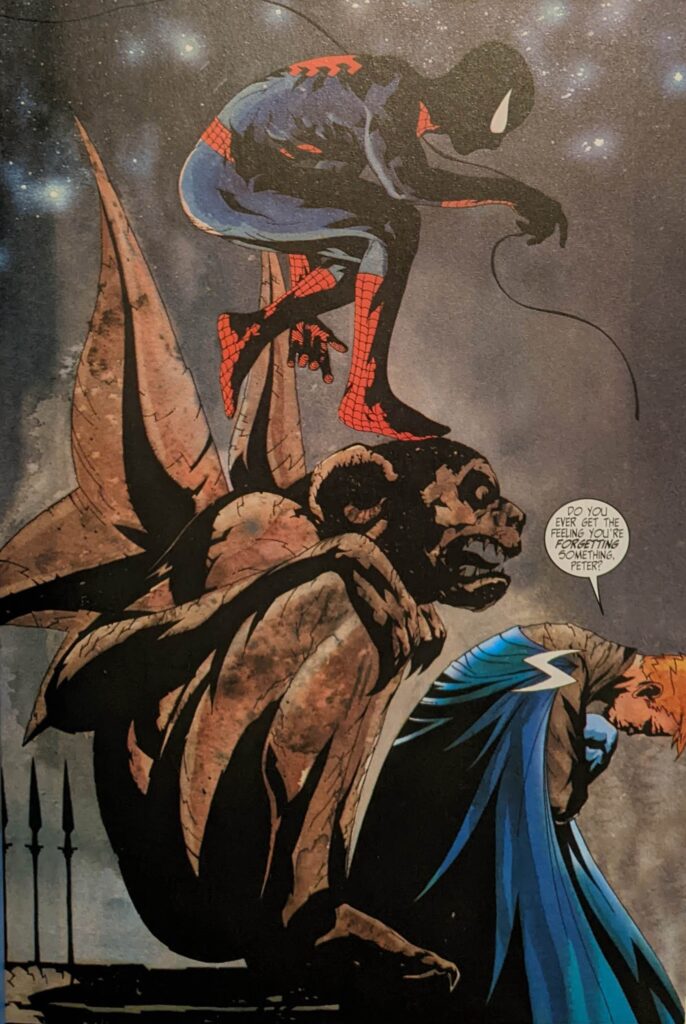
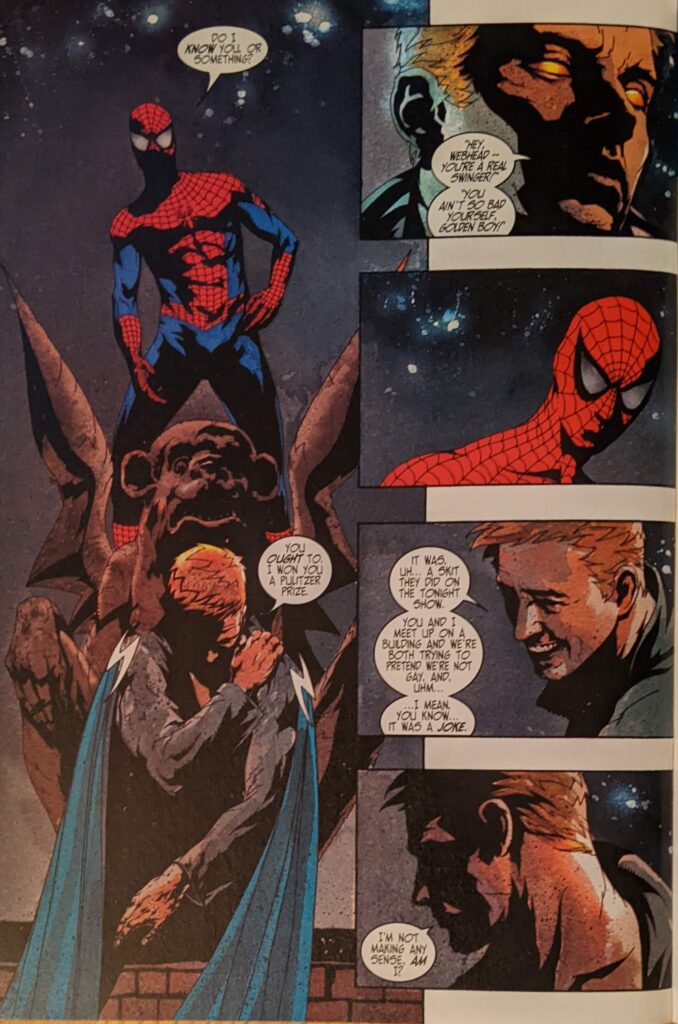
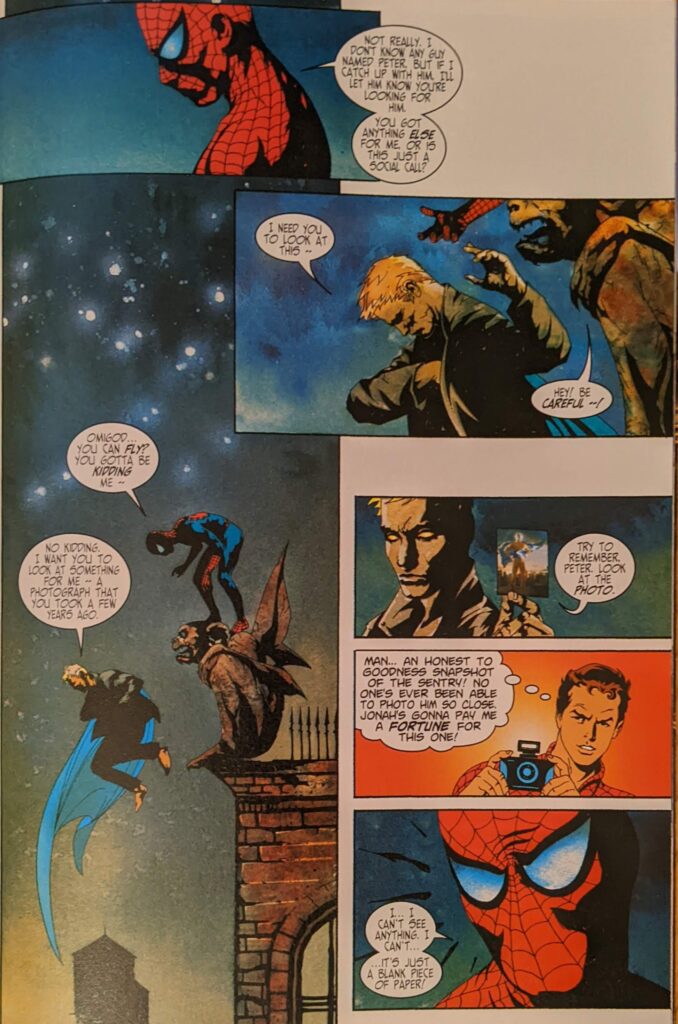
Rather ironically, while it’s been easy to identify the artist all flashbacks in the series so far were copied from, I can’t really place the Peter Parker. Doesn’t much look like anybody, really.
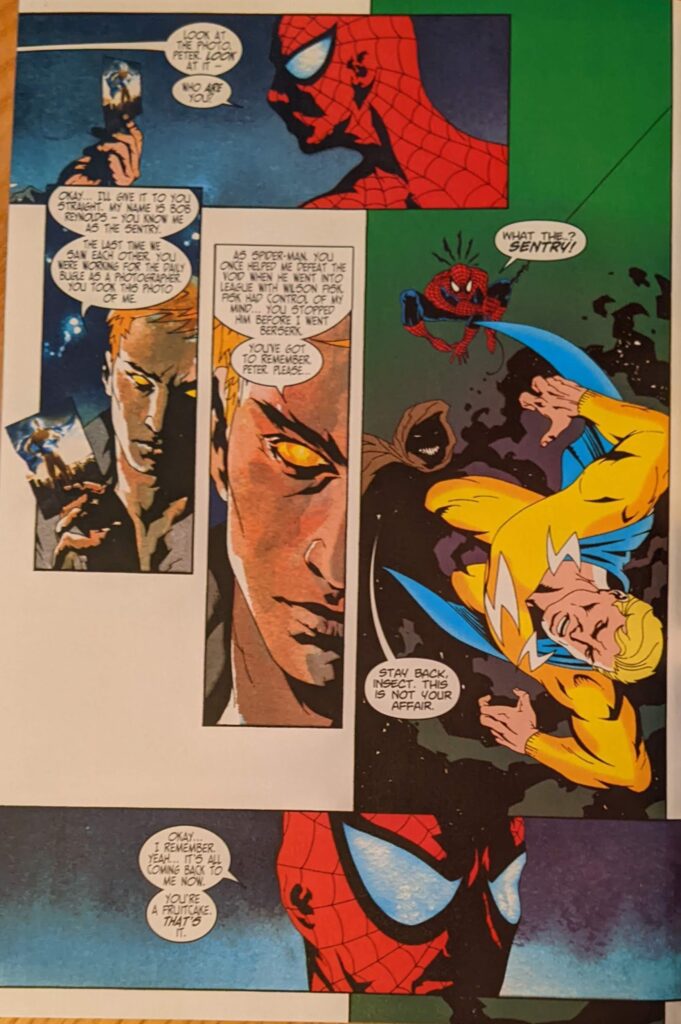
And, like, what’s going on here? The Spider-Man is copied from Erik Larsen’s cover to ASM 343 (I had to close my eyes and think for a second, but I got it), but the Sentry looks more like a Gil Kane figure, but not a Gil Kane face. Like the whole point was to be able to go “Oh, Jack Kirby-style art means we’re in the 60s,” “Oh, this pastiche of Frank Miller’s The Dark Knight Returns means it’s 1986,” etc. We get to Spider-Man and it stops making sense.
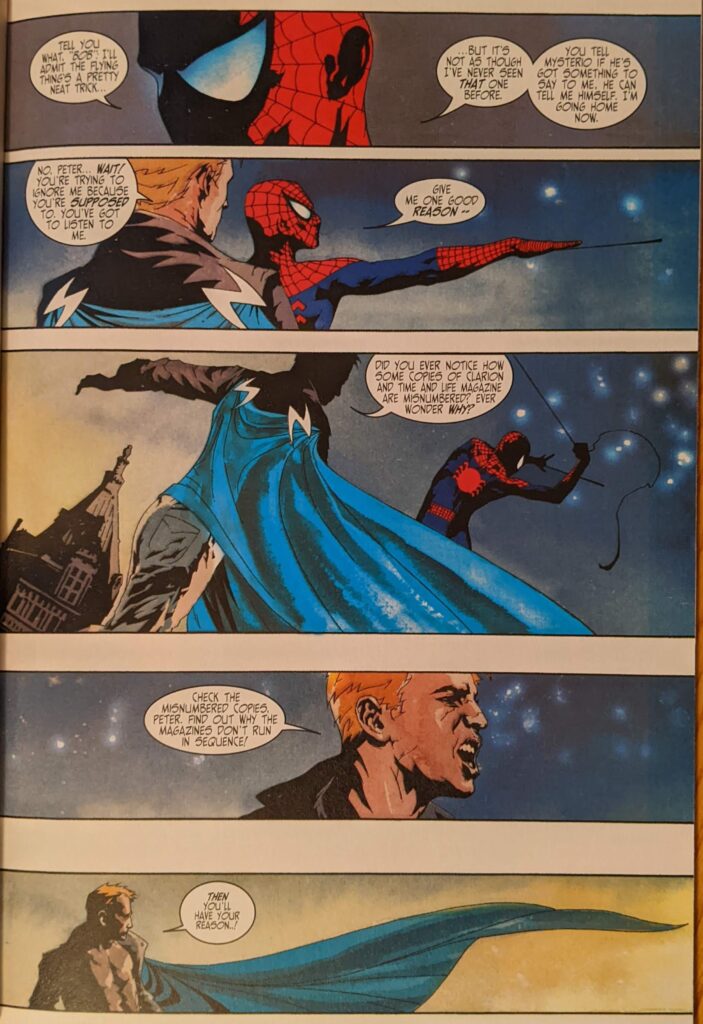
From there, we cut back to Reed, who’s found some filing cabinets full of newspaper clippings about the Sentry and the Void, and then a voice behind him says, “Yes, he does exist.”
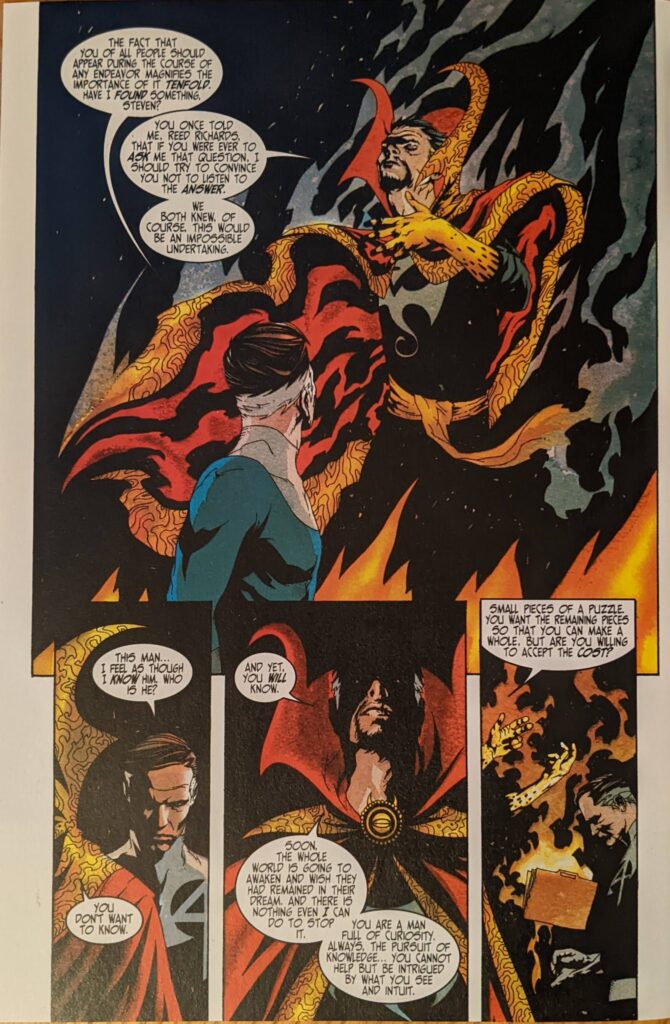
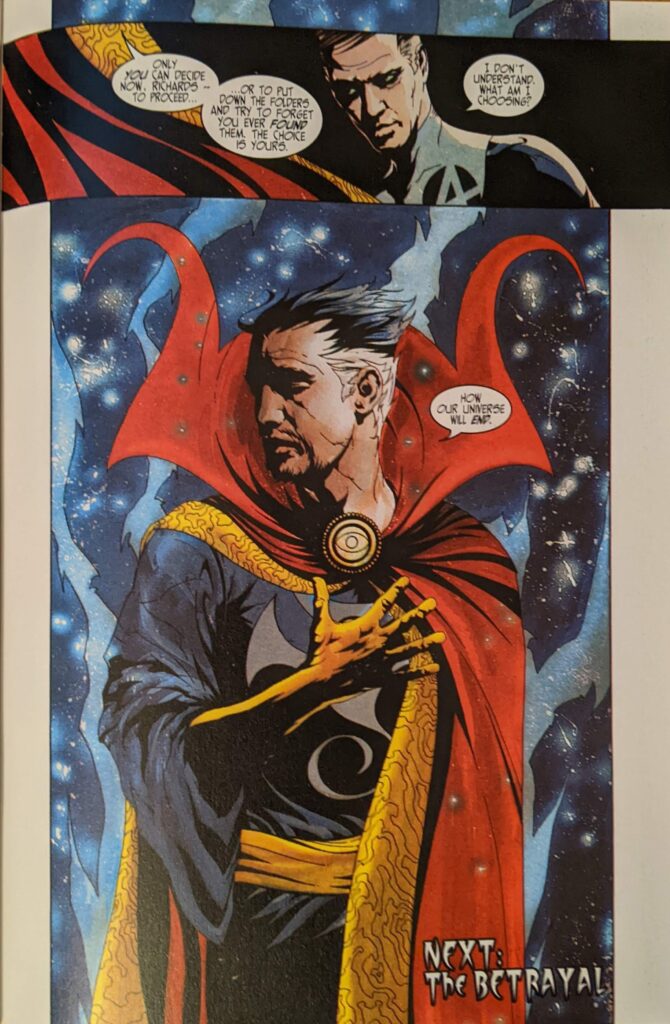
Dramatic! Next time, more Sentry, as more of the Marvel U gets pulled in.

